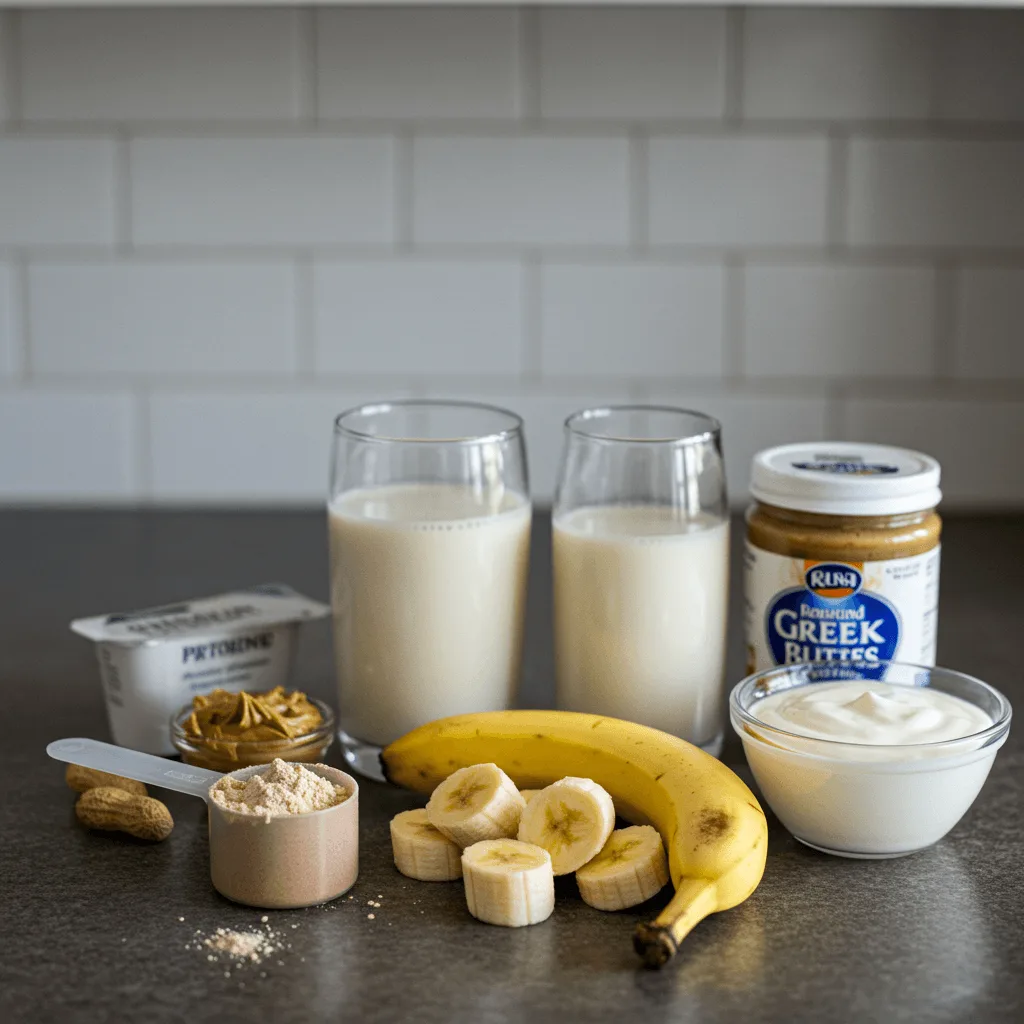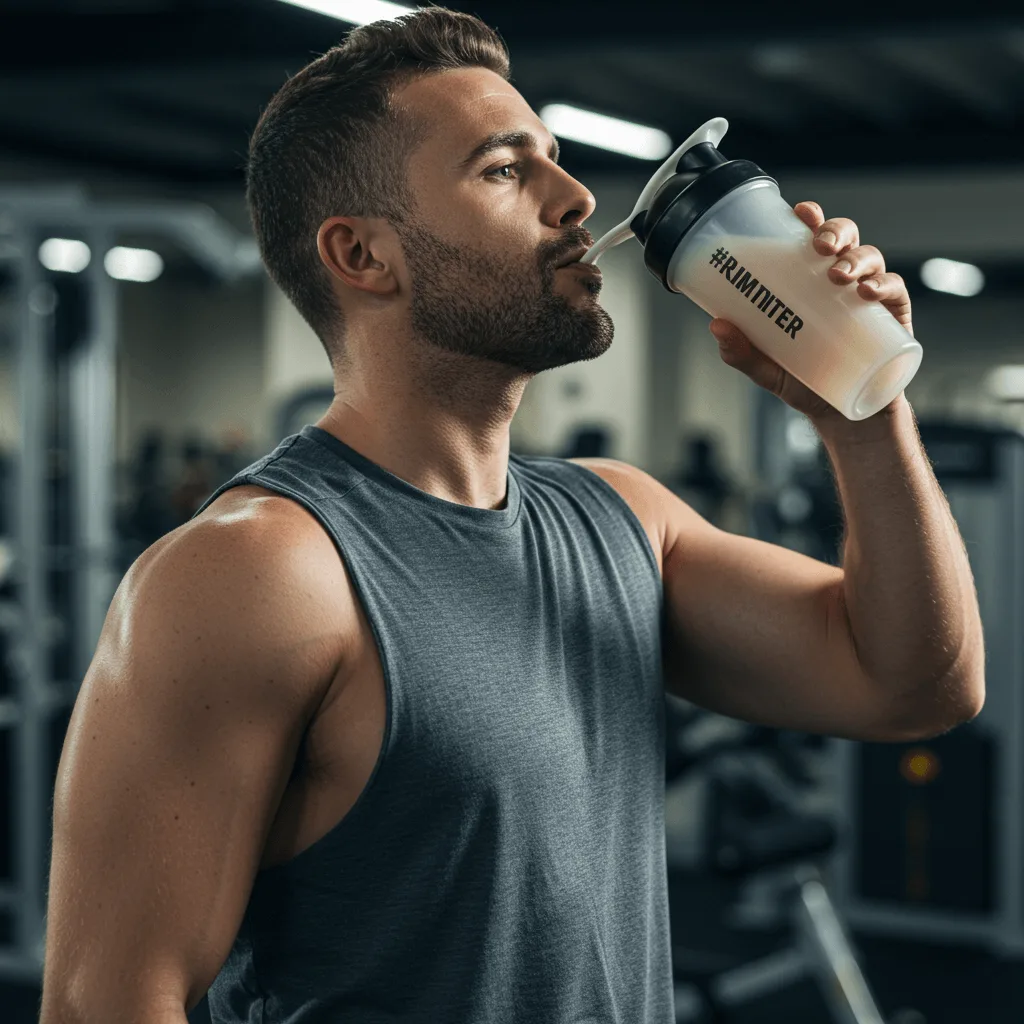Introduction
Protein shakes are one of the best ways to boost energy and speed up muscle recovery. Whether you’re an athlete, a fitness enthusiast, or simply looking for a healthy meal replacement, the right protein shakes can provide essential nutrients to fuel your body. With the right ingredients and proper timing, protein shakes can help you build muscle, stay energized, and support overall wellness.
Packed with high-quality protein, essential amino acids, and other key nutrients, these shakes can enhance muscle growth, improve endurance, and support overall well-being. But not all protein shakes are created equal—choosing the right ingredients and recipes is essential for maximizing their benefits.
In this guide, you’ll learn why protein shakes are essential, how to choose the best ingredients, easy and delicious recipes, common mistakes to avoid, and expert tips to maximize their benefits. Let’s get started!
Why Protein Shakes Are Essential for Energy & Recovery
The Science Behind Protein and Muscle Recovery
After a workout, your muscles experience tiny tears that need to be repaired for growth and strength. Protein plays a crucial role in this process by supplying essential amino acids that help rebuild and strengthen muscle fibers. Consuming a protein shake post-workout can accelerate muscle recovery, reduce soreness, and optimize muscle protein synthesis, ensuring that your body bounces back stronger.
Energy-Boosting Benefits of Protein Shakes
Protein shakes aren’t just for recovery—they also provide sustained energy. Unlike sugary snacks that cause energy crashes, protein-based drinks offer a steady release of fuel, keeping you energized for longer. By including complex carbohydrates, healthy fats, and superfoods like chia seeds or oats in your protein shake, you can enhance endurance and prevent fatigue throughout the day.
Protein Shakes vs. Whole Foods: When Are Shakes More Effective?
While whole foods provide essential nutrients and fiber, protein shakes offer a quick and convenient way to meet your protein needs—especially when time is limited. After intense workouts, your body needs fast-absorbing protein, making shakes a better choice than whole foods, which take longer to digest. Additionally, protein shakes are a great option for people who struggle to consume enough protein through their regular diet.

Choosing the Best Ingredients for a High-Quality Protein Shake
Protein Sources: Whey, Casein, and Plant-Based Options
Choosing the right protein source is key to making an effective shake. Here’s a breakdown of the most popular options:
- Whey Protein – A fast-digesting protein that helps with muscle recovery and growth. Ideal for post-workout shakes.
- Casein Protein – A slow-digesting protein that provides a steady release of amino acids, making it great for nighttime recovery.
- Plant-Based Protein – Options like pea, hemp, and brown rice protein are excellent for vegans and those with dairy allergies. They often contain fiber and antioxidants but may have a slightly grainy texture.
Healthy Additions: Fruits, Nuts, and Superfoods
To boost the nutritional value of your protein shake, consider adding these healthy ingredients:
- Fruits: Bananas for potassium, berries for antioxidants, and mangoes for a tropical twist.
- Nuts & Seeds: Almonds, walnuts, chia seeds, and flaxseeds provide healthy fats, fiber, and omega-3s.
- Superfoods: Spinach for iron, cacao for mood-boosting antioxidants, and turmeric for anti-inflammatory benefits.
Best Liquids for Protein Shakes
The choice of liquid can affect the taste, texture, and nutritional profile of your protein shakes:
- Almond Milk: Low-calorie and slightly nutty in flavor, a great option for creamy shakes.
- Greek Yogurt: Adds extra protein and probiotics for gut health while creating a thick consistency.
- Water: A no-calorie option that keeps things simple but may not be as creamy or flavorful.
- Coconut Water: Provides electrolytes and hydration, making it a great post-workout option.
Choosing the right combination of ingredients will help you create a protein shake that is not only delicious but also packed with the nutrients your body needs.

Easy & Delicious Protein Shake Recipes for Maximum Benefits
If you want to maximize your energy levels and muscle recovery, these protein shake recipes are packed with high-quality ingredients to fuel your body. Whether you need a post-workout recovery shake, a morning energy boost, or a vegan-friendly option, these recipes have you covered!
Post-Workout Recovery Shake Recipe
Best for: Muscle recovery & replenishment
Ingredients:
- 1 scoop whey or plant-based protein powder (vanilla or chocolate)
- 1 cup almond milk (or regular milk for extra protein)
- ½ frozen banana (for potassium and natural sweetness)
- 1 tbsp peanut butter (healthy fats & protein)
- ½ cup Greek yogurt (for probiotics & added protein)
- 1 tsp cacao powder (for antioxidants)
- Handful of ice cubes
Instructions:
- Add all ingredients to a blender.
- Blend on high until smooth and creamy.
- Pour into a glass and enjoy post-workout!
Energizing Morning Protein Shake Recipe
Best for: A powerful, nutrient-dense start to the day
Ingredients:
- 1 scoop vanilla protein powder
- 1 cup coconut water (for hydration & electrolytes)
- ½ cup oats (for sustained energy)
- ½ cup frozen mixed berries (for antioxidants)
- 1 tbsp chia seeds (for omega-3s & fiber)
- 1 tsp honey (natural energy boost)
- Handful of spinach (for added vitamins)
Instructions:
- Blend all ingredients until smooth.
- Pour into a glass and enjoy it as a breakfast replacement or pre-workout fuel!
Vegan Protein Shake Recipe
Best for: Plant-based diets & dairy-free options
Ingredients:
- 1 scoop pea or hemp protein powder
- 1 cup unsweetened almond milk
- ½ avocado (for creaminess & healthy fats)
- 1 tbsp flaxseeds (for fiber & omega-3s)
- ½ frozen banana (for natural sweetness)
- 1 tbsp cacao powder or matcha (for an energy boost)
Instructions:
- Add all ingredients to a blender.
- Blend until smooth and creamy.
- Serve immediately and enjoy a nutritious, dairy-free protein shake!
Each of these protein shakes is designed to support different health goals while tasting amazing. Try them out and customize ingredients to fit your preferences!

Common Mistakes to Avoid When Making Protein Shakes
Even though protein shakes are a fantastic way to fuel your body, making them incorrectly can reduce their effectiveness. Here are some of the most common mistakes people make—and how to fix them.
Overloading on Protein Powder – Finding the Right Balance
More protein doesn’t always mean better results. Consuming too much protein powder can lead to digestive discomfort, dehydration, and even unnecessary calorie intake.
The fix:
- Stick to 20–30 grams of protein per shake, depending on your dietary needs.
- Balance your protein intake with whole foods throughout the day.
- Choose high-quality protein powders without fillers or additives.
Using Too Much Sugar or Artificial Sweeteners – Healthier Alternatives
Adding flavored yogurts, fruit juices, or too many sweeteners can turn your protein shake into a sugar bomb, leading to energy crashes and unwanted weight gain.
The fix:
- Skip artificial sweeteners like sucralose and aspartame, which can cause bloating.
- Use natural sweeteners like honey, maple syrup, or dates in moderation.
- Sweeten with fruits like bananas, berries, or mangoes for fiber and antioxidants.
Skipping Essential Ingredients – Importance of Fiber, Healthy Fats, and Micronutrients
A protein shake isn’t just about protein—it should be a well-balanced meal or snack replacement with essential nutrients.
The fix:
- Fiber: Add spinach, oats, chia seeds, or flaxseeds to aid digestion and keep you full longer.
- Healthy Fats: Use ingredients like almond butter, avocado, or coconut oil for sustained energy.
- Micronutrients: Incorporate superfoods like cacao powder (antioxidants), turmeric (anti-inflammatory), or Greek yogurt (probiotics).
By avoiding these mistakes, you can ensure that your protein shakes are nutrient-dense, balanced, and optimized for your health goals.

Best Practices for Maximizing the Benefits of Protein Shakes
To get the most out of your protein shakes, it’s essential to focus on timing, balance, and hydration. Here are some key strategies to ensure your shakes support your fitness and health goals effectively.
Best Time to Drink Protein Shakes – Pre-Workout, Post-Workout, or Meal Replacement?
Timing plays a crucial role in how your body utilizes protein:
- Pre-Workout: Drinking a protein shake 30–60 minutes before exercise provides sustained energy and prevents muscle breakdown. Pair it with carbs like oats or bananas for an extra boost.
- Post-Workout: The best time to drink a protein shake for muscle recovery is within 30 minutes after exercising. This helps rebuild muscle fibers and replenish energy stores.
- Meal Replacement: If using a protein shake as a meal, make sure to include healthy fats, fiber, and micronutrients to keep it balanced and satisfying.
Pairing Protein Shakes with a Balanced Diet – Ensuring Proper Nutrition
Protein shakes should complement your diet, not replace whole foods. Here’s how to integrate them properly:
- Combine with whole foods – Eat protein-rich meals like lean meats, eggs, legumes, and dairy throughout the day.
- Don’t rely solely on shakes – Aim for a mix of solid meals and shakes to get a full spectrum of nutrients.
- Watch your macros – Balance protein intake with carbs and healthy fats to sustain energy and overall wellness.
The Role of Hydration in Recovery – Why Drinking Enough Water Matters
Staying hydrated is just as important as protein intake when it comes to muscle recovery and energy levels.
- Protein metabolism requires water, so drinking too little can cause dehydration and slow recovery.
- Electrolytes like sodium, potassium, and magnesium help balance hydration—consider coconut water or adding a pinch of sea salt to your shake.
- Aim for at least 8–10 glasses of water daily, especially if consuming high-protein foods or supplements.
By following these best practices, you’ll maximize the benefits of your protein shakes and support your body’s energy, recovery, and overall well-being.

Conclusion
Protein shakes are a powerful tool for boosting energy, enhancing muscle recovery, and supporting overall health. By choosing high-quality ingredients, avoiding common mistakes, and following best practices, you can create delicious, nutrient-packed shakes that fit seamlessly into your lifestyle.
Whether you’re drinking a post-workout shake for recovery, an energizing morning blend, or a vegan-friendly option, these recipes provide a simple and effective way to fuel your body.
Now it’s your turn! Try out these protein shake recipes and let us know your favorite in the comments. Have a go-to protein shake combo? Share it with us!
💡 Want more smoothies and health tips? Subscribe to Smoothies Queen for the latest recipes, nutrition insights, and wellness guides! 🚀💚

